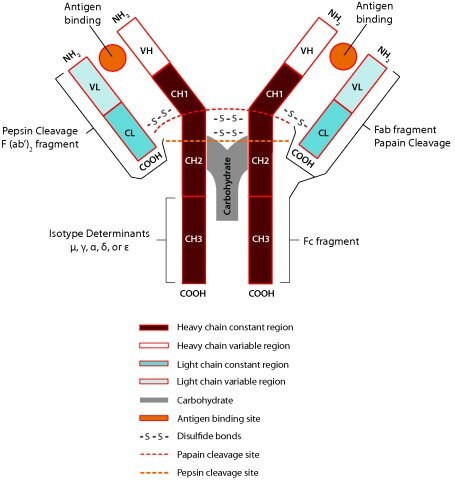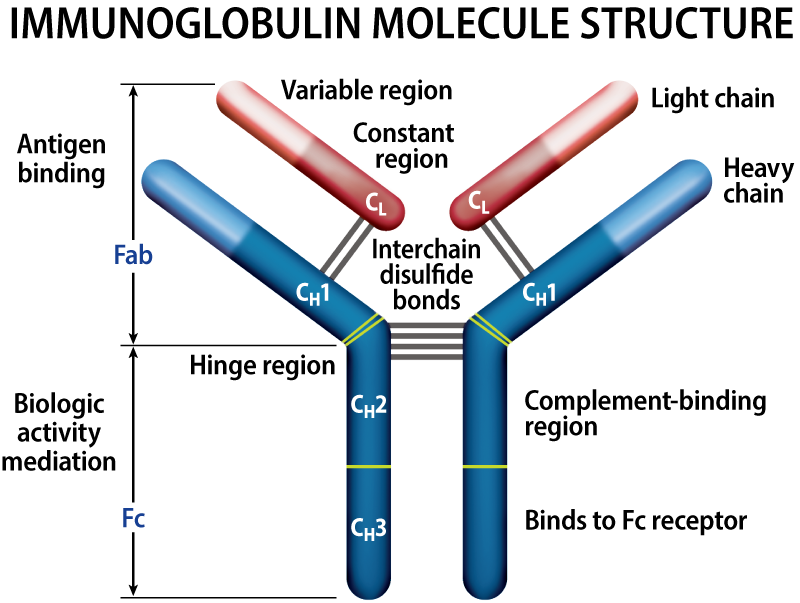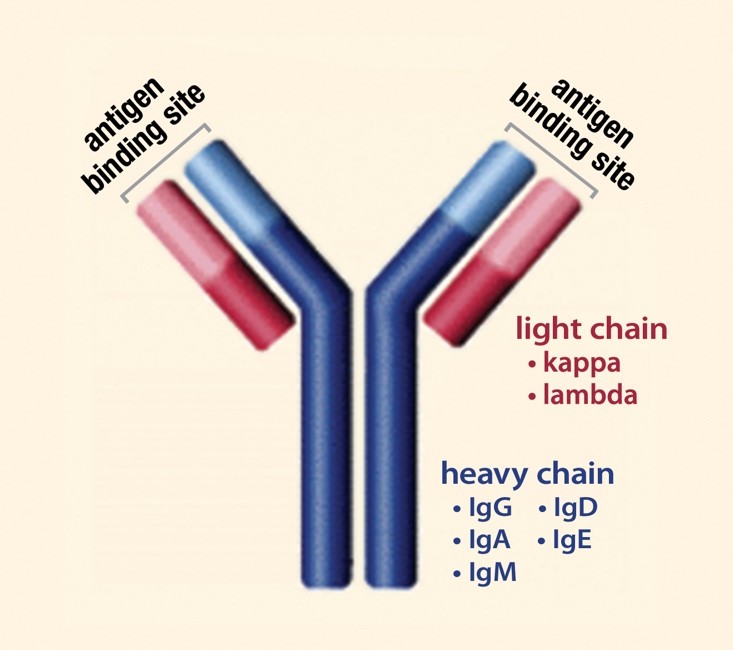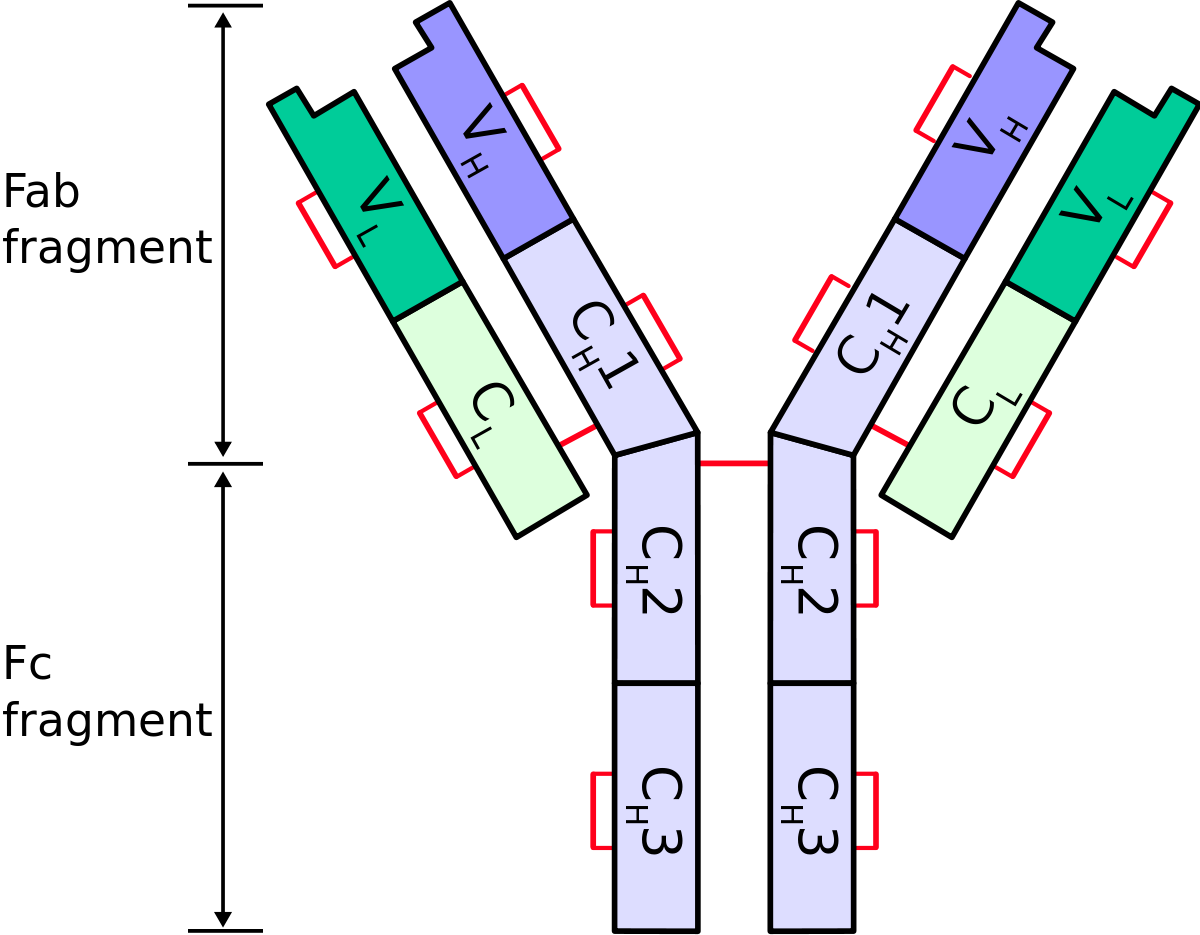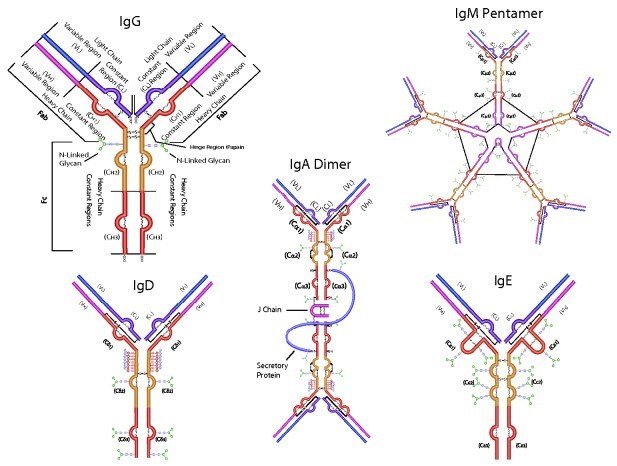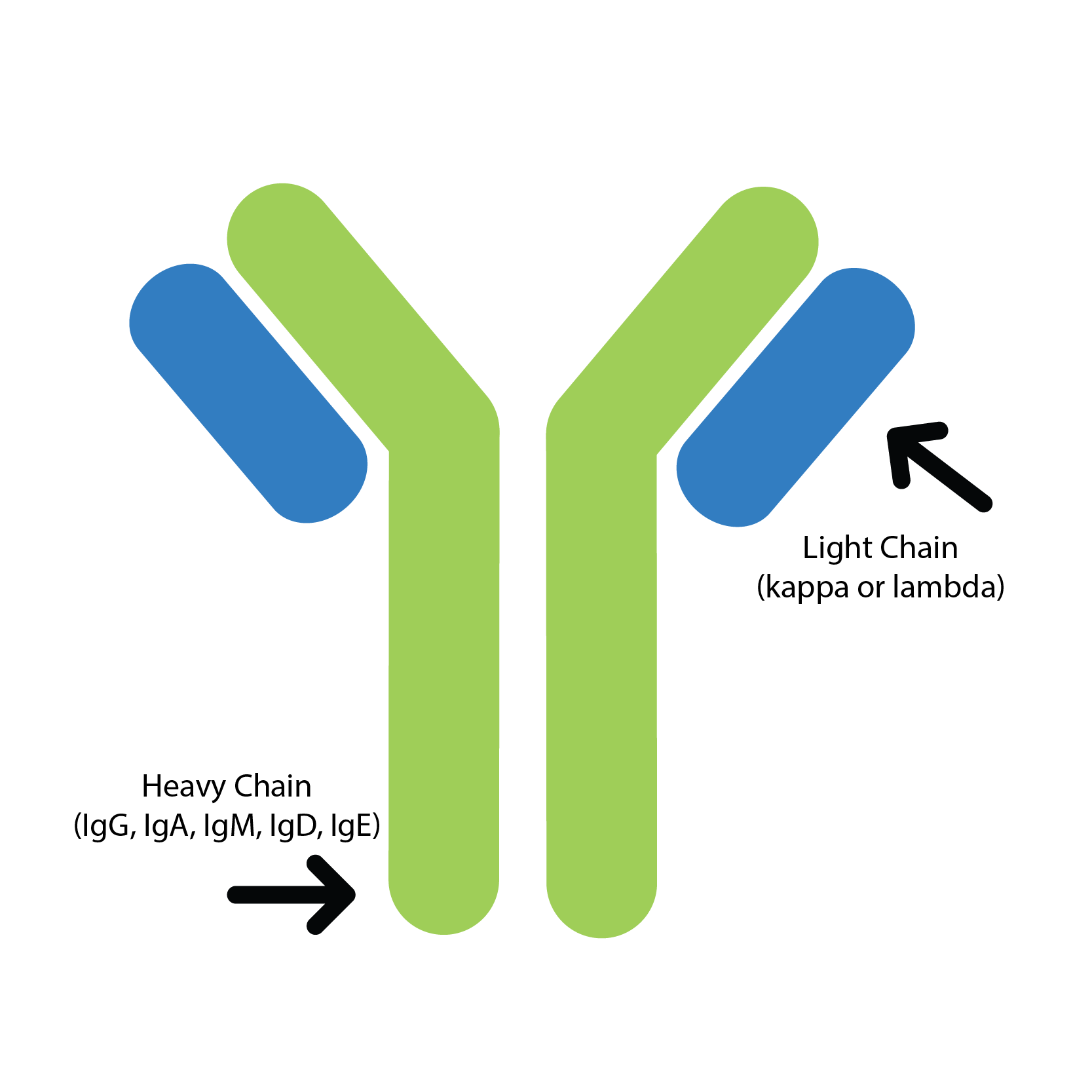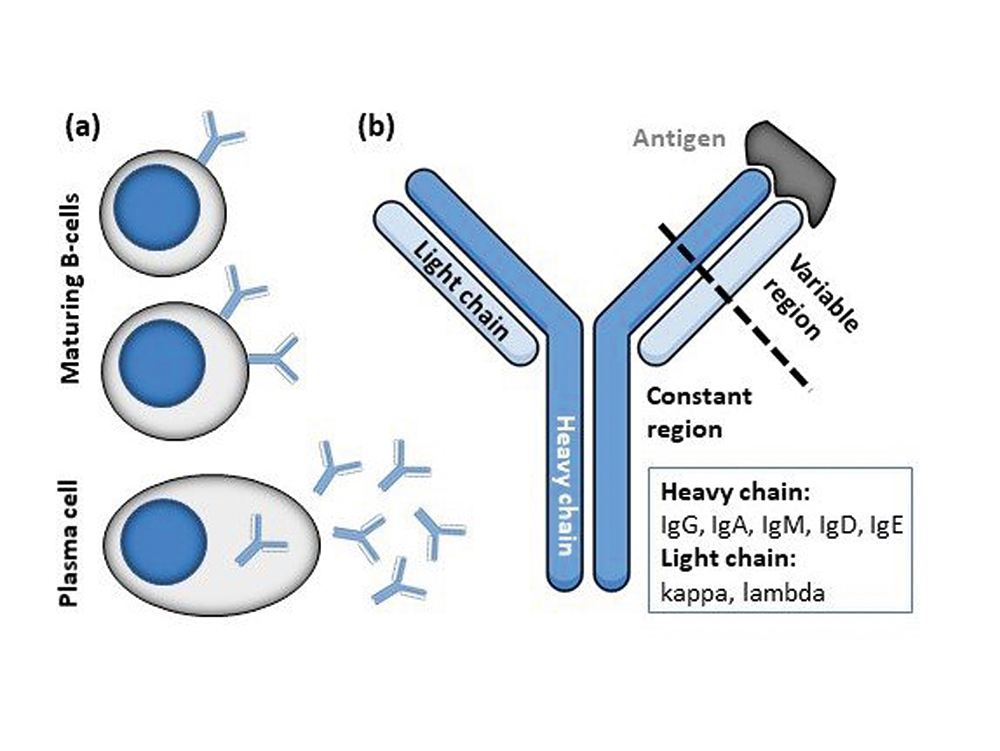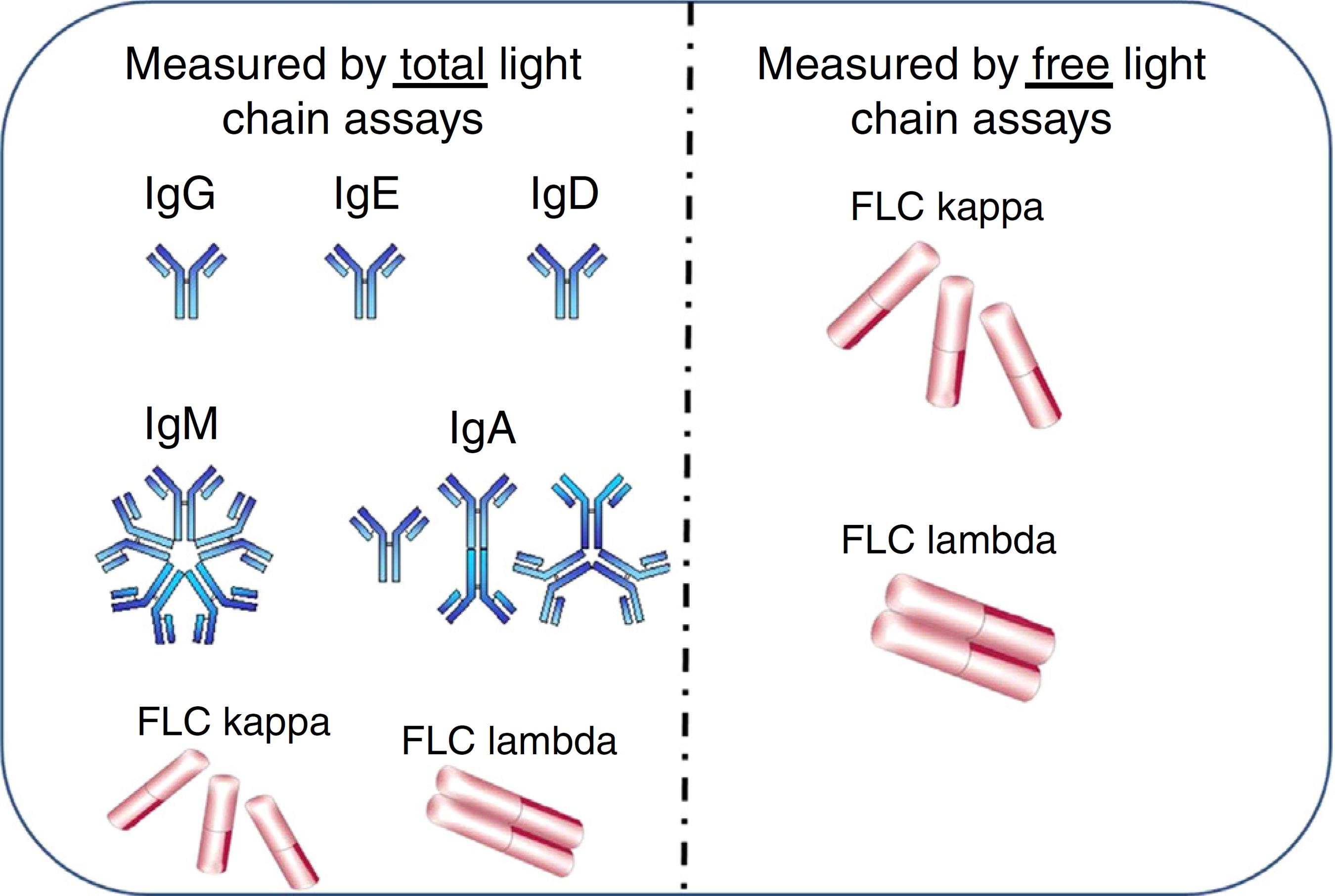Nephron Power: Monoclonal Gammopathy and end organ damage ( Skin, Nerves, Cornea and more):- it's not just the kidney.

Laboratory testing in the evaluation of a monoclonal protein: A practical framework for interpretation

What is the Difference Between Kappa and Lambda Light Chains | Compare the Difference Between Similar Terms

Kappa-on-Heavy (KoH) bodies are a distinct class of fully-human antibody-like therapeutic agents with antigen-binding properties | PNAS
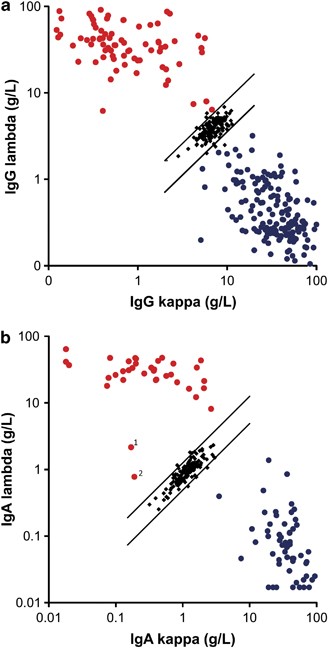
Prognostic utility of intact immunoglobulin Ig′κ/Ig′λ ratios in multiple myeloma patients | Leukemia
Structure of a normal immunoglobulin (Ig) molecule. Each immunoglobulin... | Download Scientific Diagram
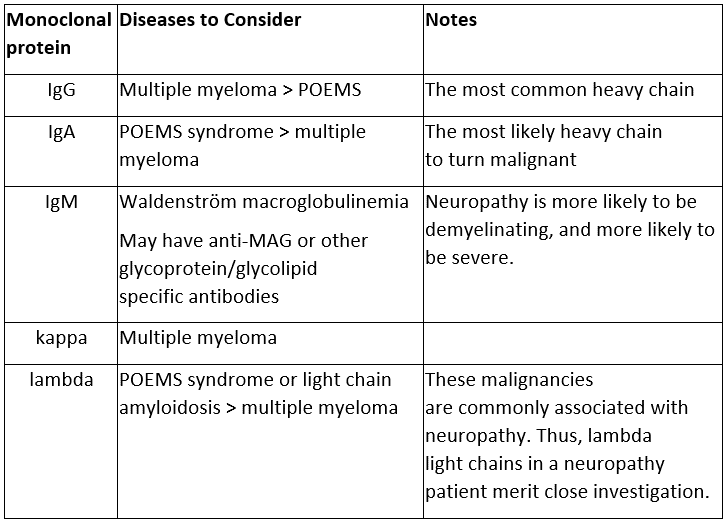
Zach London on Twitter: "6/ Different heavy and light chains are associated with different malignancies. Get to know which with this handy chart. As for me, my heart beats a little faster
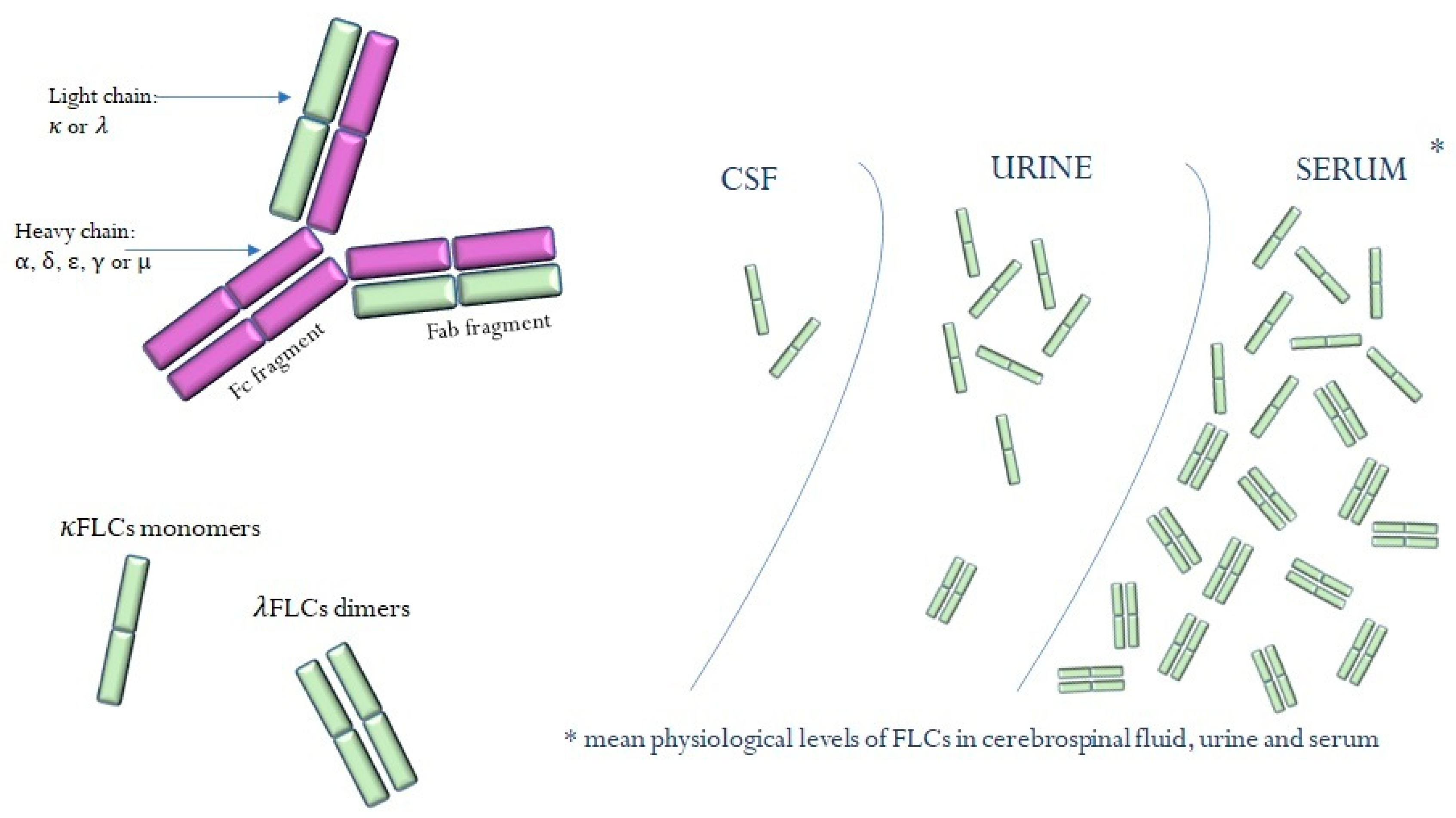
IJMS | Free Full-Text | Free Light Chains κ and λ as New Biomarkers of Selected Diseases


